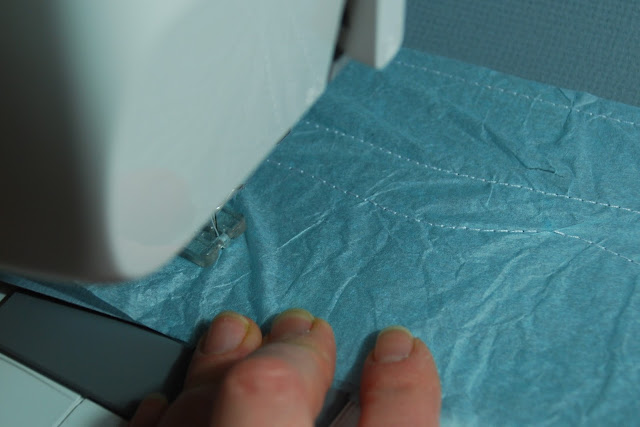Hello –
have you got everything you need ready to hand? I hope so, as now you can get
stitching! If not, here is the list to recap:
Bonjour – J’espère que
vous avez rassemblez tous le matériel, comme ça nous somme prêtes à coudre ! Si
non, ne vous inquiétez pas – voici la liste de nouveau avant de
commencer :
‘Epp flower’ pouch - Materials:
·
Piece
of thin card (eg cereal packet) approx. 21cm x 30cm
·
Templates
printed onto paper or the thin card
·
Cutter
or scissors to cut fabric and card (it is strongly advised to use different
tools for the two materials)
·
Two
pieces of contrasting fabrics 15cm x 15cm
·
Needle
and thread (colour close to fabric)
·
Contrasting
thread for pouch (optional)
·
Two
pieces of felt 15cm x 25cm (add 5cm seam allowance for other fabric types)
·
Two
lengths of ribbon or twine approx. 30cm
Pochette avec motif
patchwork - Matériel :
·
Morceau du
carton fin (ex boite de céréale) 21cm x 30cm
·
Modèles
imprimés sur du papier ou carton
·
Cutter ou
ciseaux pour carton et tissu (d’habitude on n’utilise pas les mêmes outils pour
couper les deux matériels)
·
Deux
morceaux de tissu contrasté 15cm x 15cm
·
Aiguille
et fil (couleur proche du tissu)
·
Fil en
couleur contrasté pour la pochette
·
Deux
morceaux de feutrine 15cm x 25cm (ajouté 5cm d’ourlet pour autre tissus)
·
Deux
longueurs du ruban ou ficelle de 30cm
But first a
little explanation – ‘epp’ is short for ‘English paper piecing’ which is the
type of patchwork, usually worked by hand, where you first baste your fabric
shape around a card form. Once all your
‘patches’ are prepared you then hand stitch them together. There are other ways of working, but this is
the technique I have used for this project.
D’abord un petit
explication – il existe plusieurs façons de faire du ‘patchwork’ et celui que
j’ai utilisé ici s’appelle en anglais ‘epp’.
C’est une abréviation de ‘English paper piecing’ ou l’emplacement de
papiers à l’anglaise si vous voulez. En
vrai ça veut dire que les coupons de tissu sont d’abord bâtis autours des
gabarits en carton avant d’être assemblé avec la couture à la main. C’est alors ce technique ci que je vais
utiliser pour ce projet.
Instructions :
PATCHWORK
1.
. Download the free template and print onto
paper or thin card.
2.
Very
carefully cut out the two larger and seven smaller card templates. It is very important to do this accurately.
Découpez
soigneusement les gabarits en cartons (deux plus grands et sept plus petits). C’est
très important d’être précis.
 |
photo PD
|
3.
Trace
the larger hexagon onto the fabric for the centre of the flower.
4.
Repeat
with the larger square, tracing six times on the fabric for the petals.
5.
Cut
out the seven fabric pieces, again as accurately as possible.
Découpez les
sept formes de tissu, aussi précisément que possible.
6.
Place
the smaller hexagon template in the middle of the hexagon fabric. Fold over the fabric which is visible beyond
the card.
Centrez le plus
petit gabarit hexagone sur le tissue.
Pliez le tissu qui dépasse la forme vers le milieu.
 |
photo PD
|
7.
Baste
around the edge of the fabric to hold the shape. Don’t stitch down the little triangles which
form at the corners.
Bâtissez
autours les gabarits pour tenir en place le tissu. Il ne faut pas coudre les petits triangles
qui se forme sur les coins.
 |
photo PD
|
8. With the right sides of the fabric
together, stich one square to each side of the hexagon. This stitches will be visible, so keep them
small and neat.
Avec les
endroits ensemble, attaché un carré sur chaque côté de l’hexagone. La couture sera visible, alors utilisez des
petits points, bien nettes
 |
photo PD
|
9. Press the flower motif before carefully
removing the card templates.
POUCH
10. Position and pin the patchwork on
one of the felt pieces.
Centrez et
épinglez le patchwork sur un des deux morceaux de feutrine.
11. Either by hand or machine stitch the
flower on to the felt. I chose a
contrasting colour thread and different stitches to make the design more eye-catching.
Cousez la
fleur, soit à la machine ou à la main. J’ai
choisi un fil contrasté avec des points de broderie pour faire un motif
attirant.
 |
photo PD
|
12.
Fold
over 1.5cm at the top of the felt piece. Stitch along the bottom to form a channel for
the drawstring.
Pliez un ourlet
de 1,5 cm le long de la feutrine. Cousez-le pour créer un passage.
13. Repeat with the second felt piece.
Répétez avec le
deuxième morceau de feutrine.
14. With wrong sides together,
stitch along the two sides and bottom to make a pocket.
Avec les envers
ensemble, cousez le long des deux côtes et le fond de la feutrine pour
faire une pochette.
 |
photo PD
|
15. Thread one length of ribbon through
the top channel and return through the other side. Knot the ends of the ribbon.
Passez la
ficelle dans le passage avant et rentrez par l’arrière. Nouez les bouts de la ficelle.
 |
photo PD
|
16. Repeat with the other piece,
starting from the opposite side. Your
pouch is now ready to hold all those important small things which get swallowed
by your handbag!
Répétez avec le
deuxième morceau de la ficelle en commençant par l’autre côté. Votre pochette est maintenant prête pour
contenir tous les articles qui sont normalement avalé par votre sac à main !



































